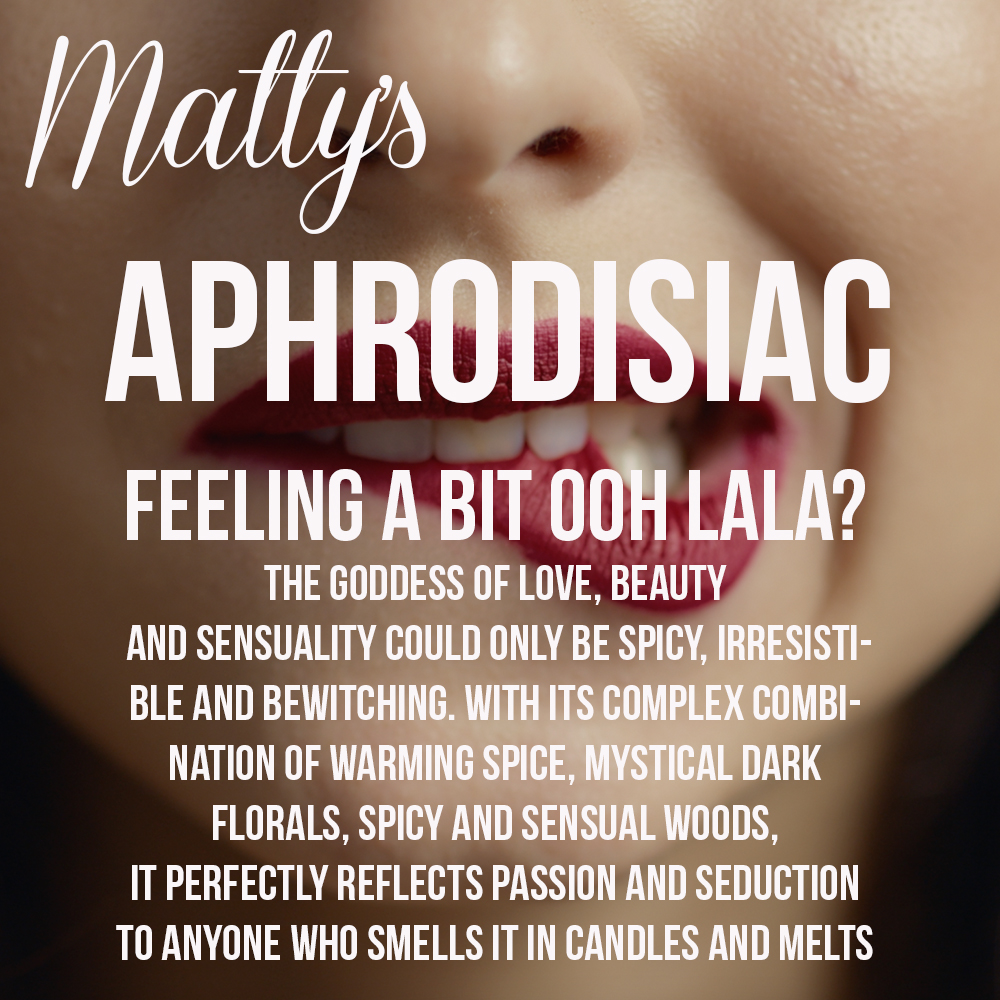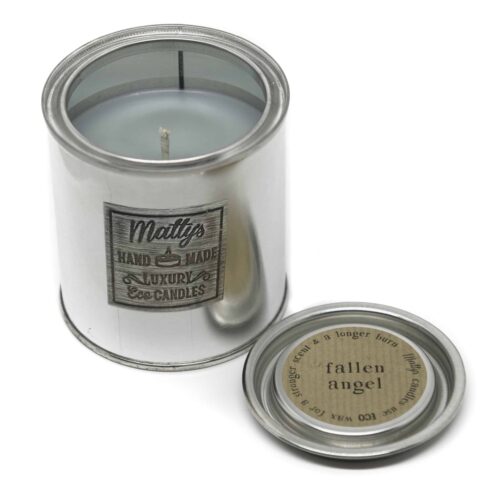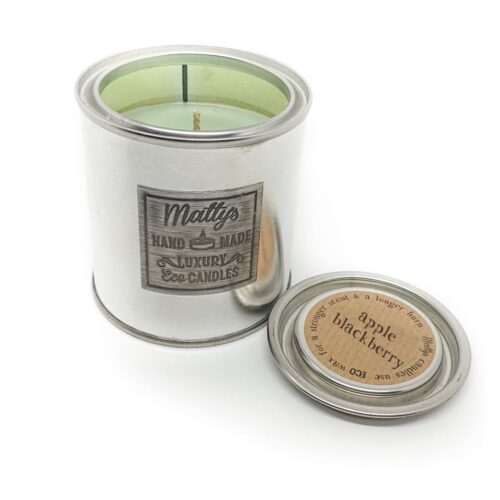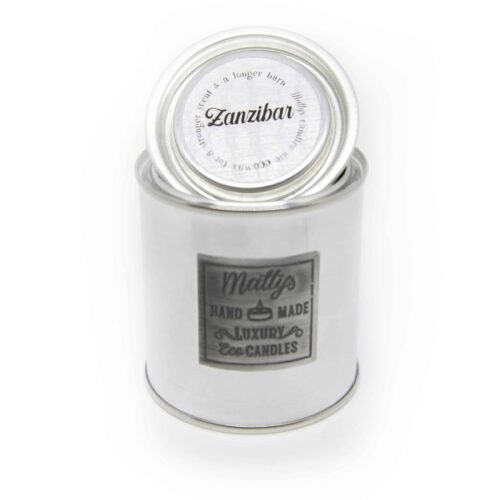All Candles, Perfume
Aphrodisiac Candle
£14.50
Aphrodisiac Scented Candle
Categories: All Candles, Perfume
Aphrodisiac in Paint Tin.
Inspired by Aphrodite who is the ancient Greek goddess of sexual love and beauty, identified with Venus by the Romans. She was known primarily as a goddess of love and fertility and occasionally presided over marriage.
A fragrance by the goddess of love, beauty and sensuality could only be spicy, irresistible and bewitching. With its complex combination of warming spice, mystical dark florals, spicy and sensual woods, it perfectly reflects passion and seduction to anyone who smells it. Please note there is no guarantee of increased ooh lala or personal excitement.
Made with Eco Wax. Our own special blend of wax contains Coconut Oil and Rapeseed Oil and nothing else. Free From Palm, Soy, Beeswax, Paraffin, Polymers, GMO Material. Our cotton wicks are lead and zinc free. Our tins are made of aluminium and manufactured in Hull. Our wax as described above is made with rapeseed from the UK and Europe and the Coconut fields are ran by independent indigenous farmers. You are therefore supporting the smaller farmer free from the corporate stronghold. As increasing evidence suggests that Soy farming uses GMO and contributes to deforestation we have made the decision to progress to using our own Eco Wax blend.
Candle Safety Advice
Candles in the home are now getting a more and more popular way to add relaxation to our homes, which has seen a large increase in the number of candle related incidents.
In the year 2003 alone, there were 1791 house fires due to candles. As a result, 22 people died and over 650 were injured.
As the sales of candles has gone up by 50% in recent years, this trend is unfortunately going to continue unless people are educated as to the dangers of candles and the damage they can cause.
Candles mark special occasions and create a special atmosphere. They also bring fire into your home. So treat them carefully.
The Do’s and Don’ts
- Always put candles on a heat resistant surface. Be especially careful with night lights and tea lights, which get hot enough to melt plastic. TVs are not fire-resistant objects
- Position them away from curtains. Don’t put candles near curtains or other fabrics – or furniture. And keep them out of draughts
- Don’t put them under shelves. It’s easy to forget that there’s a lot of heat above a burning candle. If you put it under a shelf or other surface then it can burn the surface. Make sure there’s at least three feet (one metre) between a candle and any surface above it
- Keep clothes and hair away. If there’s any chance you could lean across a candle and forget it’s there, put it somewhere else. You don’t want to set fire to your clothes or your hair
- Keep children and pets away. Candles should be out of reach of children and pets
- Keep candles apart. Leave at least four inches (10cm) between two burning candles
- Don’t move them when they’re burning. Extinguish candles before moving them. Also, don’t let anything fall into the hot wax like match sticks
- Don’t leave them burning. Extinguish candles before you leave a room. Never go to sleep with a candle still burning. And never leave a burning candle or oil burner in a child’s bedroom
- Blow candles out gently and take care of any flying sparks. You can also use a candle snuffer. Do not use the lid to snuff.
- Double check they’re out. Candles that have been put out can go on smouldering and start a fire. Make sure they’re completely out.
Classification, Labelling and Packaging

(Iso-E-Super) WARNING. May cause an allergic skin reaction. Harmful to aquatic life with long lasting e ects. Keep out of reach of children. IF ON SKIN: Wash with plenty of soap and water. If skin irritation or rash occurs: Get medical advice/attention. Dispose of contents/container to approved disposal site, in accordance with local regulations. Contains Eugenol, Geraniol, Hydroxycitronellal, alpha-Hexylcinnamaldehyde, d-Limonene, delta-1-(2,6,6-Trimethyl-3- cyclohexen-1-yl)-2-buten-1-one.

WARNING: May cause an allergic skin reaction. Harmful to aquatic life with long lasting effects. IF ON SKIN: Wash with plenty of water. If skin irritation or rash occurs: Get medical advice. May produce an allergic reaction. Dispose of contents/container to approved disposal site, in accordance with local regulations.
Net Weight 187 grams





